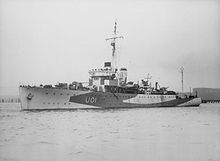| Convoy SL.78 | |||||
|---|---|---|---|---|---|
| Part of World War II | |||||
| |||||
| Belligerents | |||||
| | |||||
| Commanders and leaders | |||||
| Admiral Karl Dönitz | Vice-Admiral G T C P Swabey CB DSO | ||||
| Strength | |||||
| ~4 U-boats | 26 merchant ships 19 escorts | ||||
| Casualties and losses | |||||
| 8 merchants sunk | |||||

Convoy SL 78 was the 78th of the numbered series of World War II SL convoys of merchant ships from Sierra Leone to Liverpool. Ships carrying commodities bound for the British Isles from South America, Africa, and the Indian Ocean traveled independently to Freetown to be convoyed for the last leg of their voyage. Twenty-five merchant ships departed Freetown on 18 June 1941. [1] U-boats sank eight ships before the convoy reached Liverpool on 12 July. [2]